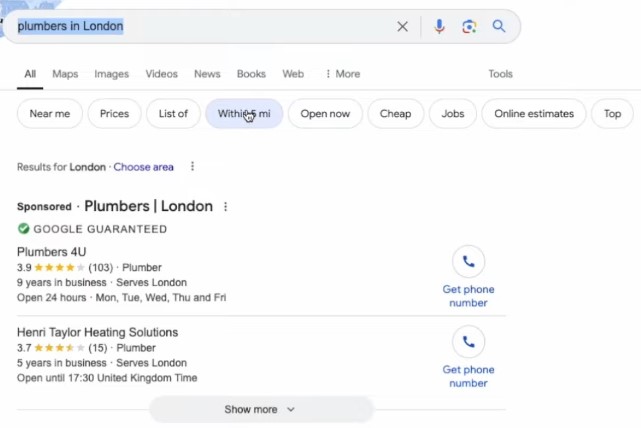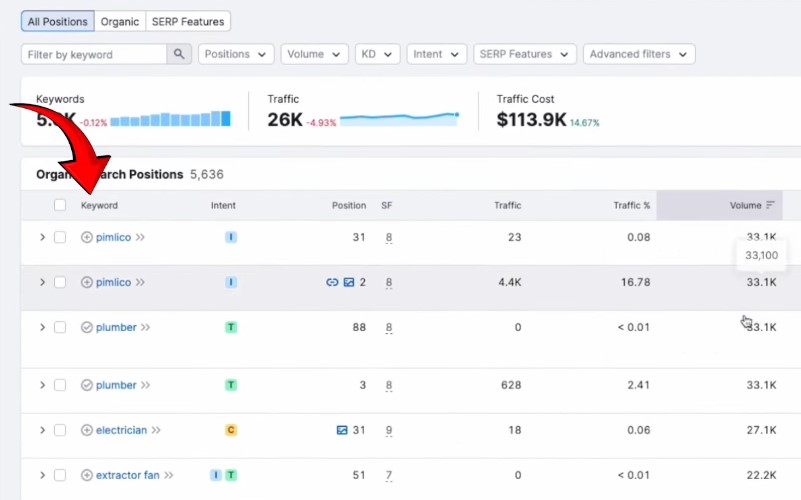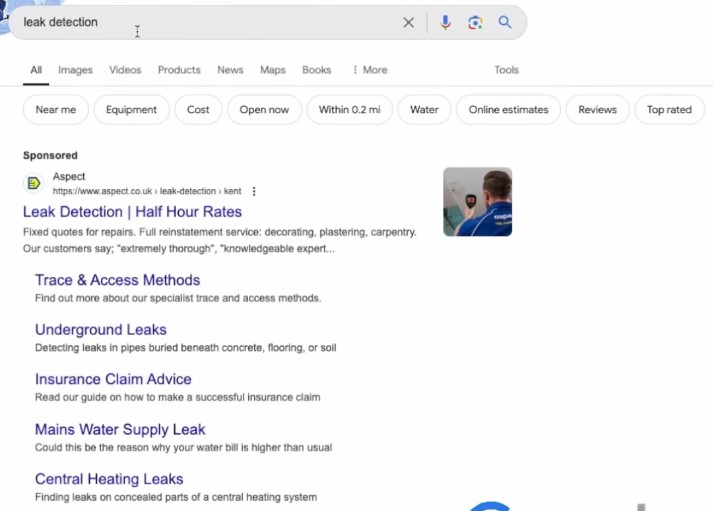
If you’re running a local service business and struggling to get consistent leads, you’re not alone. The competition is tough, customer behaviour is changing, and standing out online is more important than ever. But what if there was a straightforward way to get quality leads quickly—without spending a fortune on ads or wasting time on guesswork?
In this blog, we’ll break down a proven strategy to help any local service business start generating leads fast. Whether you’re a plumber, electrician, pest controller, or run any trade or home service business, this guide will show you how to:
- Pick a high-demand, low-competition niche
- Build a website that ranks and converts
- Attract traffic through local SEO and blog content
- Create engaging content for social media
- Build trust with reviews and social proof
- And most importantly—stand out from the crowd with a unique offer
These are the exact steps we’ve used at One Base Media to help dozens of local businesses boost leads, get more customers, and grow fast.
Let’s get started.
Step 1
Research Your Local Market Using Google

Before you build anything, you need to know what’s working in your industry—and where the opportunities are.
Start by going to Google and searching for your service in your location. For example, you might type “plumber in London” or “pest control Birmingham”.
Take a look at the top organic search results—not the ads at the top, but the businesses that are ranking naturally. These are the companies that Google sees as the most relevant and trusted for that search term. In our example, let’s say Pimlico Plumbers appears at the top.
These top-ranking businesses are doing something right. Your goal is to understand what that is and do it better.
Step 2
Use SEMrush to Find Keywords With Demand

Next, take the URL of the top-ranking business and paste it into a tool like SEMrush. This lets you see how much organic traffic the site gets and which keywords are bringing in the most visitors.
Click on the “Organic Research” tab and review the keywords sorted by monthly search volume. You’ll see what people are searching for in your industry—along with how difficult those keywords are to rank for.
Green or light-coloured keyword difficulty scores usually mean less competition. For example, if you see a keyword like “extractor fan installation” with 22,000 monthly searches and a low difficulty score, that’s a golden opportunity.
Also look for keywords that show commercial intent—terms people search when they’re ready to hire someone. For example, “leak detection near me” or “emergency boiler repair” are keywords that signal buyer intent.
Step 3
Focus on a Specific Niche

Now that you’ve found a keyword with good volume and low competition, see if there are businesses already focused entirely on that service.
In our example, let’s look up “leak detection” and see who ranks top. You might find a business like “UK Leak Detection” dominating the results.
When you visit their website, you’ll notice that everything is built around that one service. Their homepage, service pages, blog content—it’s all about leak detection. They’re not trying to offer every plumbing service under the sun. They’ve chosen one niche and built their entire online presence around it.
That’s what you want to do.
Focusing on one niche makes it easier to rank in Google, build authority, and attract the right type of customer. It’s far easier to dominate a niche like “leak detection” than to be just another generic plumbing company.
Step 4
Check the Domain Name Availability
Once you’ve chosen your niche, head over to GoDaddy or another domain registrar and search for a domain name that includes your niche keyword—for example, something like LeakDetectionExperts.co.uk or LeakDetectionDirect.co.uk.
Even if your ideal domain isn’t available, GoDaddy will suggest similar ones that are still relevant. What’s important is having your niche keyword in the domain name. This can help with SEO and makes it instantly clear what your business does.
Step 5
Study What’s Working for Your Competitors
Now go back to the niche website you were analysing. Use SEMrush again to look at their “Top Pages” under the Organic Research tab.
This will show you which pages are bringing in the most traffic. Often, the homepage will be number one—but you’ll also find valuable blog posts or location-specific pages that get lots of visitors.
For example, you might see blog posts titled:
- “What Is a Leak Seal and Should You Use It?”
- “How Water Leak Detection Works”
These blog posts answer specific questions and target long-tail keywords. They’re designed to attract people who are already looking for a solution—and that means they’re more likely to convert.
Take inspiration from these posts and start planning your own blog content that solves customer problems in your niche.
Step 6
Build Location-Based Service Pages
To expand your reach and rank for more local searches, create separate service pages for different towns and cities.
You can easily generate a list of UK towns using websites like UKTownList.co.uk or CheckYourCompany.co.uk.
Once you have that list, start building pages like:
- Leak Detection in Bedfordshire
- Leak Detection in Manchester
- Leak Detection in Essex
Each page should be tailored to that location and include useful content, customer benefits, and a call-to-action.
Google loves location-specific content. If someone types in “leak detection Bedfordshire”, and you’ve got a dedicated page for that location, your chances of ranking increase significantly.
Step 7
Create Better Content Than Your Competitors
Your ultimate goal is to build the best website in your industry. That means:
- More useful blog content
- Better-structured service pages
- Clearer calls-to-action
- Faster loading times
- More helpful visuals (e.g. photos, diagrams, videos)
Don’t just copy what your competitors are doing. Improve on it.
If they’ve got 10 service pages, make 20. If their blogs are 500 words, write 1000-word blog posts. Make your content more informative, easier to read, and more valuable to potential customers.
Step 8
Build a Strong Social Media Presence
Once your website is live, it’s time to go all-in on social media.
Platforms like TikTok and Instagram are great for local service businesses. You might not think people want to watch leak detection videos—but they do. In fact, some of these videos rack up millions of views.
Search TikTok for your niche. You’ll find other tradespeople sharing behind-the-scenes content, problem-solving tips, and time-lapse installs.
Don’t overthink it—just start posting. Show your work, explain common problems, share tips, and answer FAQs. Engage with comments and post consistently.
Over time, your content will build trust and drive traffic back to your website.
Step 9
Add a Unique Offer to Stand Out
Ranking on Google and building a social following is great—but what happens when people land on your website?
To convert traffic into leads, you need a strong offer. Something that makes people stop scrolling and say, “Yes, that’s exactly what I need.”
For example, UK Leak Detection’s unique offer is: “The UK’s Only No-Find, No-Fee Leak Detection Service.”
It’s simple, powerful, and builds immediate trust.
Think about what you can offer that no one else does. It could be:
- Same-day service
- 24/7 emergency call-outs
- Free callouts if no issue is found
- Price-match guarantee
- Free diagnostics with every job
Highlight this offer clearly on your homepage and every service page. Make it the reason people choose you over competitors.
Step 10
Get Google Reviews and Build Trust
Your Google Business Profile (GBP) is one of the most powerful tools for getting local leads. When someone searches for a service in your area, the top three businesses in the “map pack” usually get most of the clicks.
And guess what influences that? Reviews.
If your competitors have 30 or 40 reviews, aim for 50+. The higher the number, and the better the rating, the more likely people are to trust you.
Start by asking every satisfied customer to leave a review. Send them a quick message after a job with a direct link to your GBP review page. You can also incentivise feedback with small discounts on future services.
Positive reviews don’t just help you rank higher—they also convert more visitors into customers.
Step 11
Display Social Proof and Accreditations
Finally, make sure your website includes plenty of social proof.
Add:
- Google and Trustpilot review widgets
- Customer testimonials
- Logos of companies you’ve worked with
- Industry accreditations (Gas Safe, NICEIC, Checkatrade, etc.)
All of these things help build trust. When potential customers see real feedback, verified partnerships, and proof of credibility, they feel more confident choosing your service.
Check the detailed video below -
Getting leads for your local service business doesn’t have to be a guessing game. By focusing on a single niche, understanding what your market is searching for, and building a strong online presence with targeted content, reviews, and social proof—you can generate high-quality leads consistently and predictably.
The most successful businesses don’t try to be everything to everyone. They pick one thing, do it better than anyone else.
This is the blueprint we use to grow local service businesses across the UK—and it works. If you follow these steps consistently, you’ll start generating high-quality leads, building trust with customers, and growing your business faster than ever.

Speak with our Lead Generation Expert
Got a quick question about how your local service business can grow
with perfect strategy and plan? Ask our expert.
Speak to one of our experts today on 01702 668207 or send us a message.
